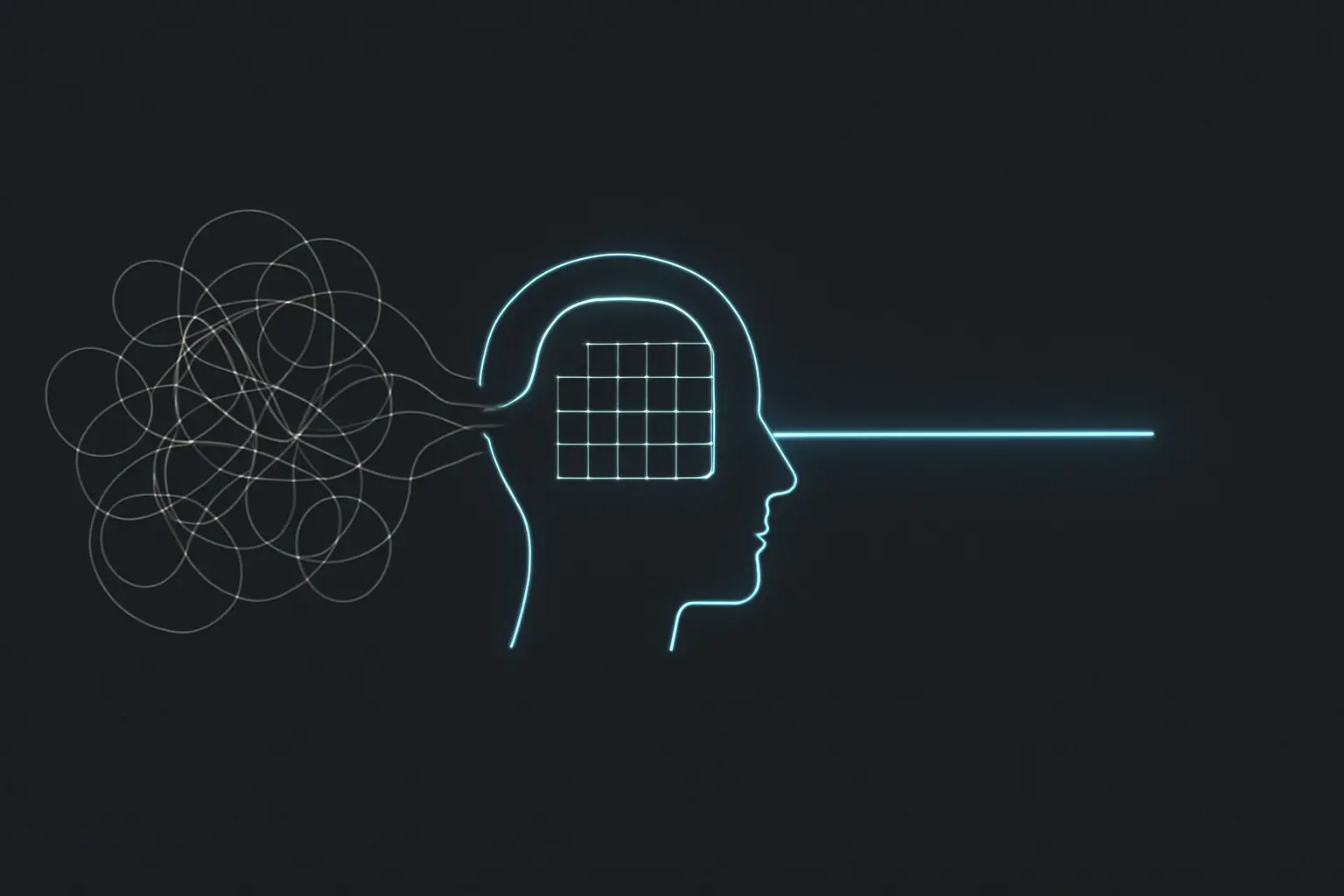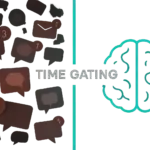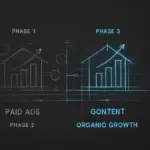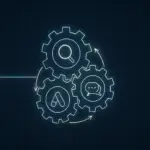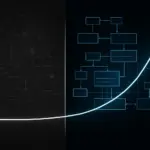It was a Tuesday afternoon when I realized something was wrong. The question was simple: Should our team at JvG Technology use a new Slack channel or an existing Asana project for a minor internal follow-up? It was a decision with almost zero long-term consequences, yet I found myself staring at the screen for a full minute, feeling palpable mental friction. The choice felt disproportionately heavy.
This wasn’t about the task itself. It was a symptom of a larger, often invisible, tax on founders and operators: decision fatigue. It’s the quiet erosion of your ability to make sound judgments, caused not by one big dilemma, but by the relentless stream of small choices that fill a modern workday.
As someone obsessed with how automation creates scalability (https://patrick-thoma.com/automation-scalability), I view this not as a personal flaw but as a system bug. My energy is a finite resource. If it’s being drained by trivial choices, it’s not available for the strategic thinking that actually moves the business forward. This realization sparked a new micro-experiment: building a system to offload these routine cognitive tasks. I call it the ‚Default Action‘ Matrix.
The Science of a Drained Brain
Before building a solution, I wanted to understand the mechanics of the problem. The concept of “decision fatigue” derives from a psychological theory called ego depletion, popularized by researcher Roy F. Baumeister. His experiments found that our capacity for self-control and intelligent decision-making is a limited resource. Like a muscle, it gets tired with overuse.
Every choice you make, from what to eat for lunch to which email to answer first, draws from the same mental energy pool. With each decision, you become more depleted.
[Image 2: A graphic illustrating the concept of cognitive load, showing a brain overflowing with small decision points.]
This isn’t just a feeling; it has measurable consequences. A famous study of parole board judges revealed a startling pattern: prisoners who appeared early in the morning received parole about 70% of the time, while those who appeared late in the day were granted parole less than 10% of the time. The judges, mentally fatigued from a day of decisions, increasingly reverted to the simplest, safest option: denial.
Their brains weren’t making a complex risk assessment; they were simply conserving energy. This is the exact problem I’m trying to solve. When my own cognitive resources are low, I’m more likely to procrastinate on small tasks, make impulsive choices, or simply stick with the status quo, even if it’s inefficient. This is a direct threat to designing efficient operational workflows (https://patrick-thoma.com/operational-workflows).
The Experiment: Mapping Defaults to Triggers
The goal of the Default Action Matrix is simple: to pre-decide common, low-impact scenarios. By creating a clear „if this, then that“ protocol, I can take the right action without deliberation, saving my cognitive energy for higher-stakes problems.
It’s a classic application of the role of structured experiments in business growth (https://patrick-thoma.com/structured-experiments)—applying a testable system to a personal productivity challenge.
Here’s how I’m structuring the experiment.
Step 1: Identifying the Decision Drains
For one week, I kept a log of every small, recurring decision that caused even a moment of hesitation. I wasn’t tracking big strategic choices, but the operational minutiae. The list was revealing:
- Communication: When does an email warrant a meeting versus a direct reply?
- Task Management: Where do I log a quick idea versus a formal project task?
- Delegation: What’s the threshold for doing something myself versus assigning it to a team member?
- Scheduling: How do I handle non-critical meeting requests from outside our organization?
These are the decisions that, individually, seem insignificant. But compounded over a day, they are the primary source of cognitive load.
Step 2: Building the Matrix Logic
With the list of decision drains, I started building the matrix. It’s essentially a simple reference table with four columns:
- Trigger: The specific event or question that requires a decision (e.g., „Receive an unsolicited partnership email“).
- Impact Level: A quick rating of the decision’s potential consequence (Low, Medium, High). The matrix only applies to „Low“ impact decisions.
- Default Action: The pre-defined, non-negotiable response. This is the core of the system.
- Exception Condition: The one specific scenario where the default action should not be taken. This provides a critical escape hatch for nuance without reopening the entire decision.
Here’s a simplified snapshot of what it looks like in practice:
[Image 1: A simplified flowchart or matrix showing ‚IF X, THEN Y‘ decision logic for common business tasks.]
| Trigger | Impact Level | Default Action | Exception Condition |
|---|---|---|---|
| Internal task idea arises | Low | Add to my personal „Ideas“ board in Asana. | If it requires collaboration within 24h. |
| Unsolicited partnership email | Low | Archive and forward to a general „Partnerships“ folder for weekly review. | If the sender is a direct contact from a top-tier company in our industry. |
| Request for a 15-min „intro call“ | Low | Reply with a templated response directing them to a specific contact form. | If the request is a direct referral from a key client. |
| Team asks a question I’ve answered before | Low | Respond with a link to the relevant process document. | If the process document is demonstrably unclear. |
The magic here is in its simplicity. By externalizing the logic, I no longer have to process these triggers from scratch every time. I just follow the predefined script.
Early Observations
I’m only a couple of weeks into this experiment, but the impact is already noticeable. The feeling of friction on small tasks has dropped significantly. That Tuesday afternoon dilemma of „Slack channel or Asana project?“ now has a default action: „If it’s an internal task for a specific project, it lives in that project’s Asana board. End of story.“
It feels less like being a rigid robot and more like being a pilot running through a pre-flight checklist. The checklist handles the routine so the pilot can focus on the dynamic conditions of the flight. I’m preserving my best thinking for the complex challenges we’re solving at JvG Labs and Mehrklicks, not squandering it on administrative overhead.
Frequently Asked Questions
When I discuss this idea with other founders, a few common questions come up.
- Doesn’t this make you too rigid and kill creativity?
Quite the opposite. The goal isn’t to automate creative or strategic thinking. It’s to automate the administrative clutter that gets in the way of it. By building a reliable system for the mundane, I free up more unstructured time and mental space for deep, creative work. The matrix handles the noise so I can focus on the signal.
- How do you decide which decisions are „low-impact“?
My rule of thumb is the „one-week test.“ If the outcome of this decision will be largely irrelevant or forgotten in one week, it’s low-impact. Choosing the right architecture for a new solar module production line is high-impact. Deciding which tag to use in our CRM is low-impact.
- What tool do you use to manage this matrix?
Right now, it’s just a simple note in Notion. The tool doesn’t matter. It could be a physical notebook, a spreadsheet, or a text file. The value is in the act of defining the logic, not in the sophistication of the software that holds it.
- How often do you update the matrix?
I plan to review it quarterly. As workflows evolve, some default actions may become obsolete or inefficient. Like any good system, it requires occasional maintenance to make sure it’s still serving its purpose.
Next Steps: Scaling the System
This project is an ongoing exploration of a simple thesis: cognitive load is a bottleneck to scale. By systematically reducing it, I can improve my effectiveness as a leader and operator.
My next step is to see how this personal system could be adapted for team use. Could we establish „team-level“ default actions for common operational questions? This could not only reduce collective decision fatigue but also drive more consistency and speed in our daily work. I’ll be documenting that phase as it develops. For now, I’m focused on refining my own matrix and reclaiming my mental energy, one default action at a time.
